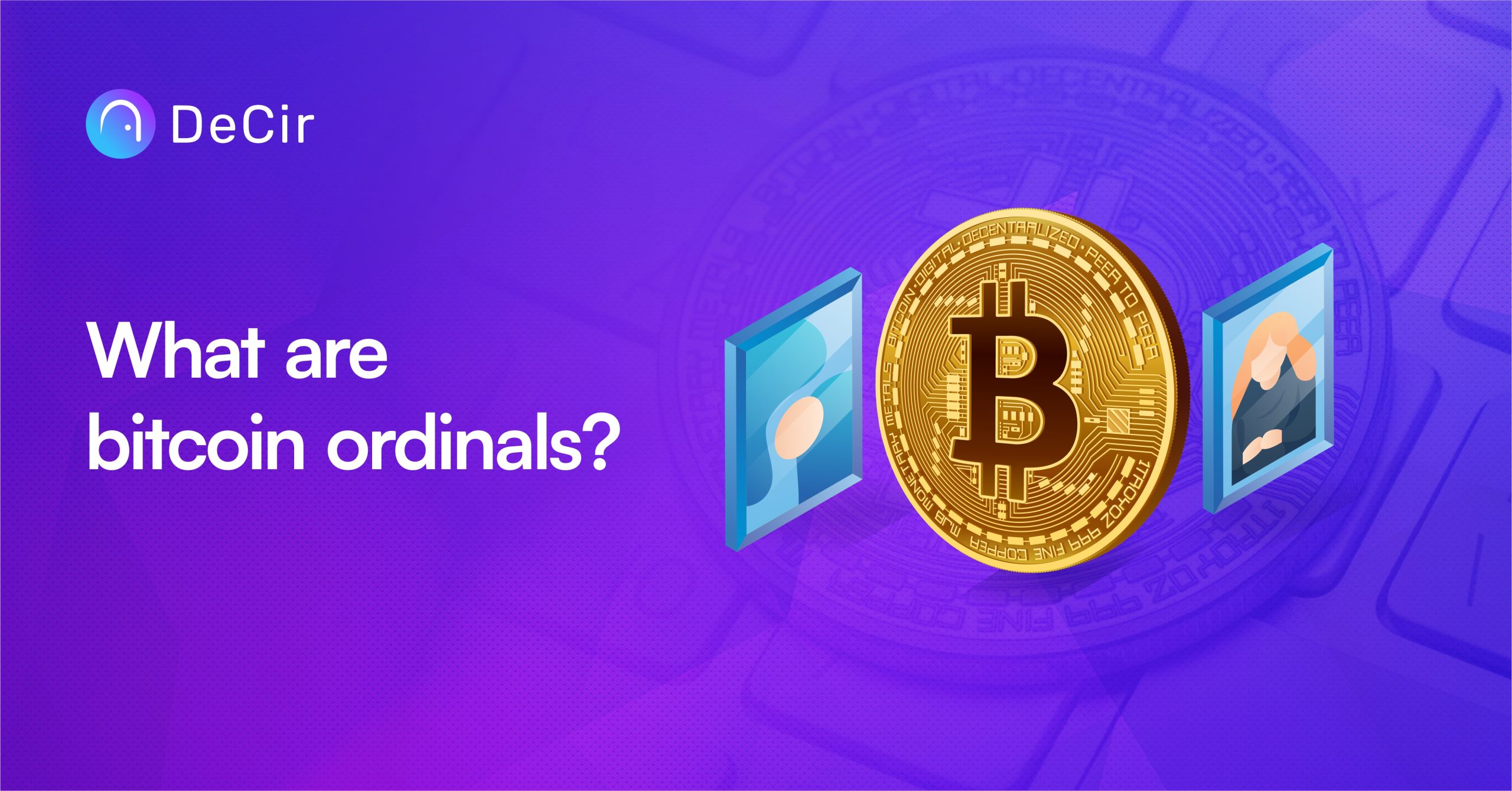The world of cryptocurrencies has seen groundbreaking innovations over the past decade, and non-fungible tokens (NFTs) are at the forefront of this revolution. NFTs have taken the digital world by storm, enabling the tokenization of unique digital assets and opening up exciting opportunities for creators and collectors. While Ethereum and other blockchain networks have been the primary hubs for NFT activity, the introduction of Bitcoin Ordinals is set to change the game for the world’s oldest and most iconic cryptocurrency, Bitcoin.
TL;DR
- Bitcoin Ordinals introduce NFTs to the Bitcoin network by enabling the inscription of unique data on the smallest unit of Bitcoin, making each satoshi a non-fungible token.
- The Taproot upgrade in November 2021 paved the way for the technical implementation of Bitcoin Ordinals, enhancing efficiency and privacy for data inscription on the Bitcoin blockchain.
- Bitcoin Ordinals stands out with on-chain minting, direct inscription of data, and the potential for multi-dimensional NFTs, offering a new frontier for digital creativity and asset ownership on the oldest cryptocurrency network
What are Bitcoin Ordinals?
Bitcoin Ordinals is a revolutionary concept that seeks to unlock the potential of NFTs on the Bitcoin network. At its core, Bitcoin Ordinals empowers users to imbue the smallest unit of Bitcoin, known as satoshis or sats, with unique information and data. Satoshis represent one hundred millionth of a single Bitcoin, making them the fundamental units of the cryptocurrency.
By integrating distinctive information into each satoshi, Bitcoin Ordinals transform these tiny value units into individualized, non-fungible tokens. In essence, this protocol introduces Bitcoin NFTs, allowing users to create, trade, and own digital assets with unparalleled uniqueness and security on the Bitcoin blockchain.
The Technical Design of Bitcoin Ordinals
The technical implementation of Bitcoin Ordinals is rooted in the fundamental architecture of the Bitcoin network. Bitcoin operates on a decentralized and secure platform, making it one of the most robust and resilient blockchain networks. However, these characteristics have historically limited the introduction of new features, such as smart contracts, on the Bitcoin blockchain.
The introduction of the Taproot upgrade in November 2021 marked a pivotal moment for Bitcoin Ordinals. Taproot significantly improved the efficiency and privacy of data inscription within Bitcoin transactions. With this upgrade, developers gained the capability to include additional data within each transaction, laying the groundwork for integrating smart contracts and enabling the creation of Bitcoin NFTs through the Ordinals protocol.
Also read: How sport brands enhance user experience with NFT
The Emergence of Bitcoin Ordinals
The idea of bringing NFTs to the Bitcoin network is not entirely new. Previous attempts were made through projects like Counterparty and Stacks, but limitations in Bitcoin’s technical design hindered their widespread adoption. However, the introduction of the Taproot upgrade rekindled interest in exploring the potential of Bitcoin Ordinals.
As the crypto ecosystem continued to expand, developers and artists alike were keen to explore new frontiers and extend the utility of the Bitcoin blockchain. Bitcoin Ordinals presented an opportunity to merge the world of NFTs with the stability and security of the Bitcoin network, sparking a new wave of interest and excitement.
The Uniqueness of Bitcoin Ordinals
Bitcoin Ordinals distinguishes itself from traditional NFTs in several key ways:
On-chain Minting
Unlike other blockchain networks, where NFTs often refer to files hosted externally, Bitcoin Ordinals store the actual raw file data directly on the Bitcoin blockchain. This on-chain minting ensures that the data inscribed on satoshis remains immutable and permanently embedded within the Bitcoin network.
Inscription vs. Tokenization
The creation of Bitcoin Ordinals involves directly inscribing data on the Bitcoin blockchain, while traditional NFTs are typically generated through tokenization on various blockchain platforms. This inscription reinforces the unique nature of Bitcoin NFTs, setting them apart in digital assets.
Smart Contract Functionality
As of now, Bitcoin Ordinals lack the sophisticated smart contract capabilities commonly found on networks like Ethereum. While this may present challenges for trading Bitcoin NFTs on decentralized exchanges, it does not diminish the protocol’s appeal or potential for growth.
Concurrency Opportunities
Bitcoin Ordinals offer a novel feature, allowing multiple inscriptions on the same satoshi unit. This characteristic opens up possibilities for multi-dimensional NFTs and creative expression that sets them apart from traditional single-asset NFTs.
The Future of Bitcoin Ordinals
Introducing Bitcoin Ordinals has sparked a wave of creativity and innovation within the crypto community. Artists, developers, and enthusiasts are exploring the vast potential of this protocol, envisioning a future where Bitcoin NFTs coexist alongside traditional NFTs on various blockchain networks.
As the crypto landscape evolves, the adoption of Bitcoin Ordinals is likely to grow, drawing in more creators and collectors seeking to leverage the stability and historical significance of the Bitcoin network for their NFT projects.
For creators: How creators will lead NFT adoption globally
Conclusion
Bitcoin Ordinals represents a new frontier for NFTs, transforming the world’s oldest cryptocurrency into a vibrant hub for digital creativity and unique asset ownership. By harnessing the power of the smallest unit of Bitcoin, Bitcoin Ordinals unlocks a realm of possibilities for artists and developers, bridging the gap between the iconic Bitcoin network and the thriving NFT space.


